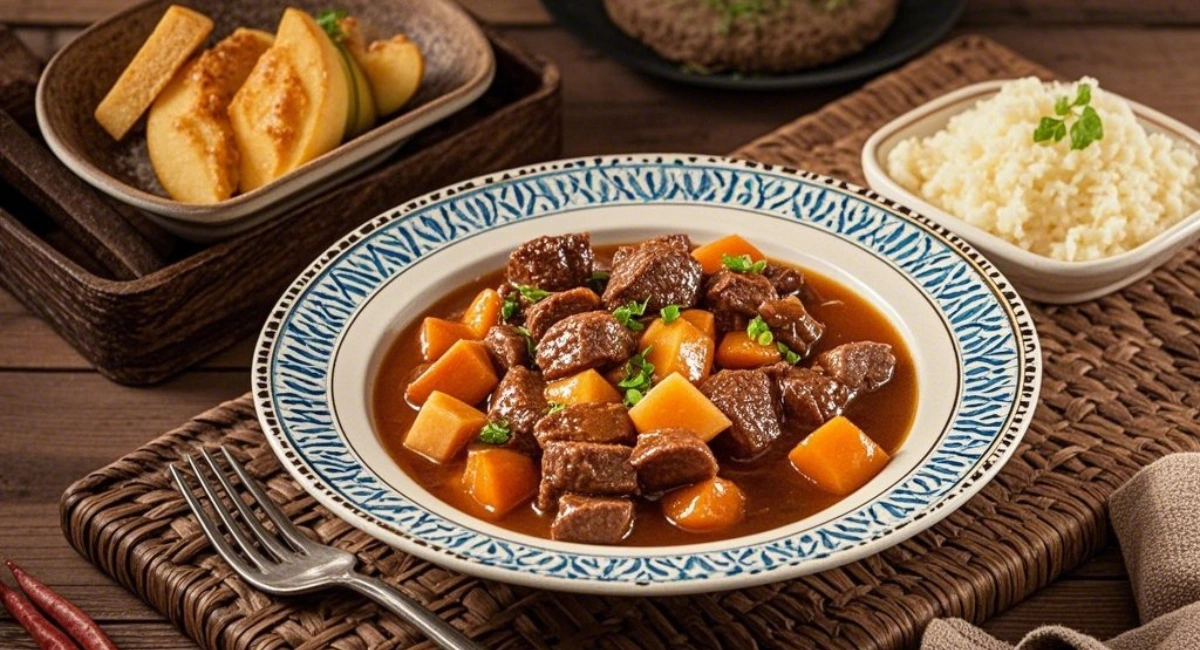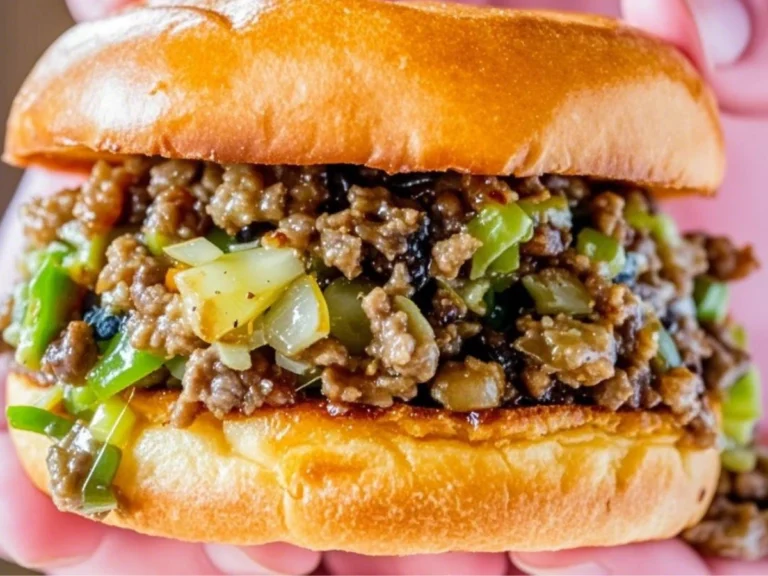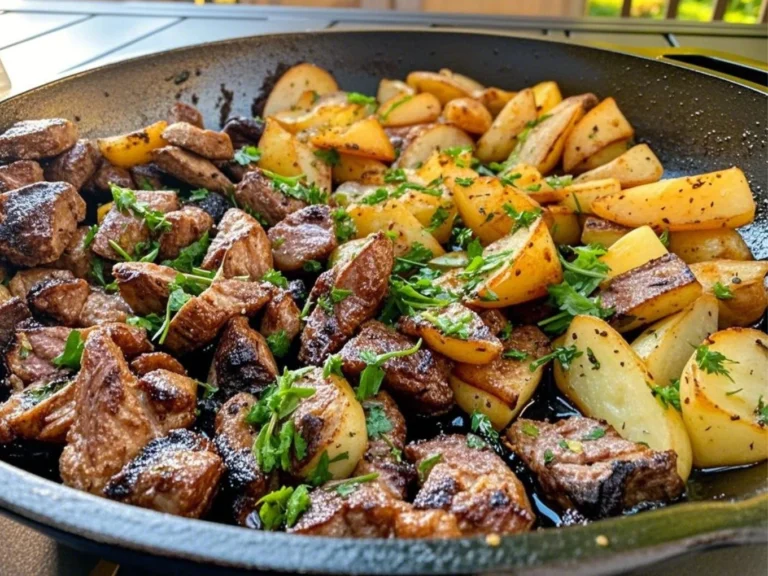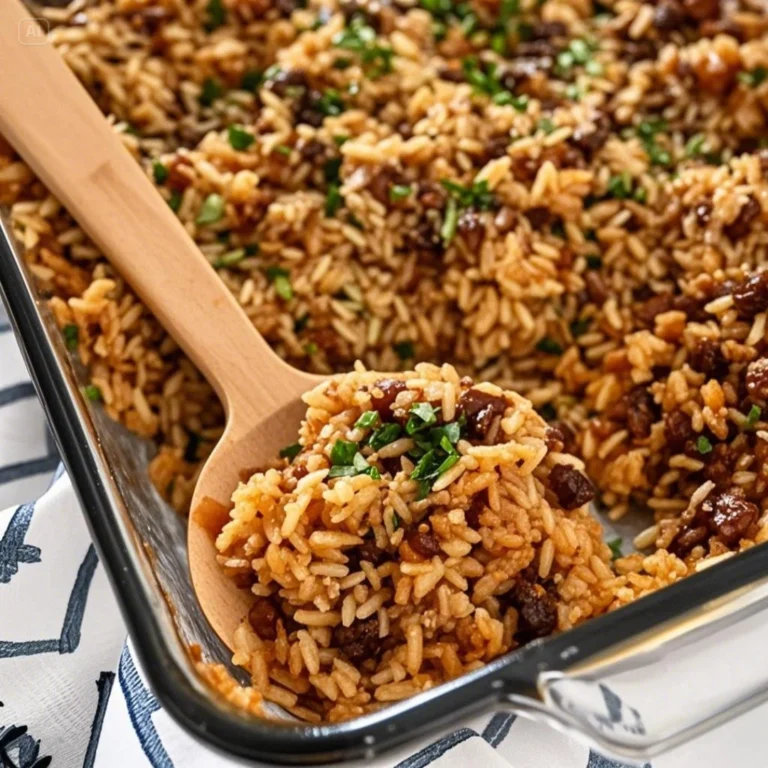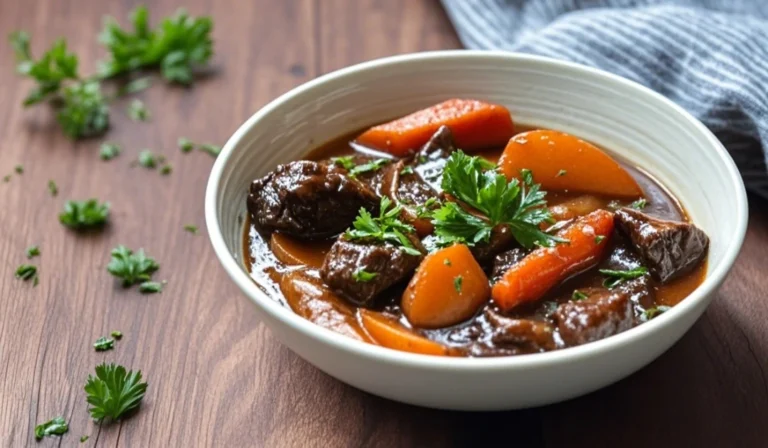Old Fashioned Beef Stew: Classic Comfort Food Made Easy
Table of Contents
There’s something almost magical about walking into a home filled with the rich, savory aroma of beef stew simmering on the stove. It instantly transports you back to childhood memories of family gatherings where the rhythmic chopping of vegetables and the gentle bubbling of the pot created the soundtrack of wintertime comfort. Old fashioned beef stew isn’t just a meal—it’s a warm embrace on a cold day, a tradition passed through generations, and a reminder that sometimes the simplest foods offer the greatest satisfaction. Today, discover how to create this classic comfort food with minimal fuss but maximum flavor in your own kitchen.
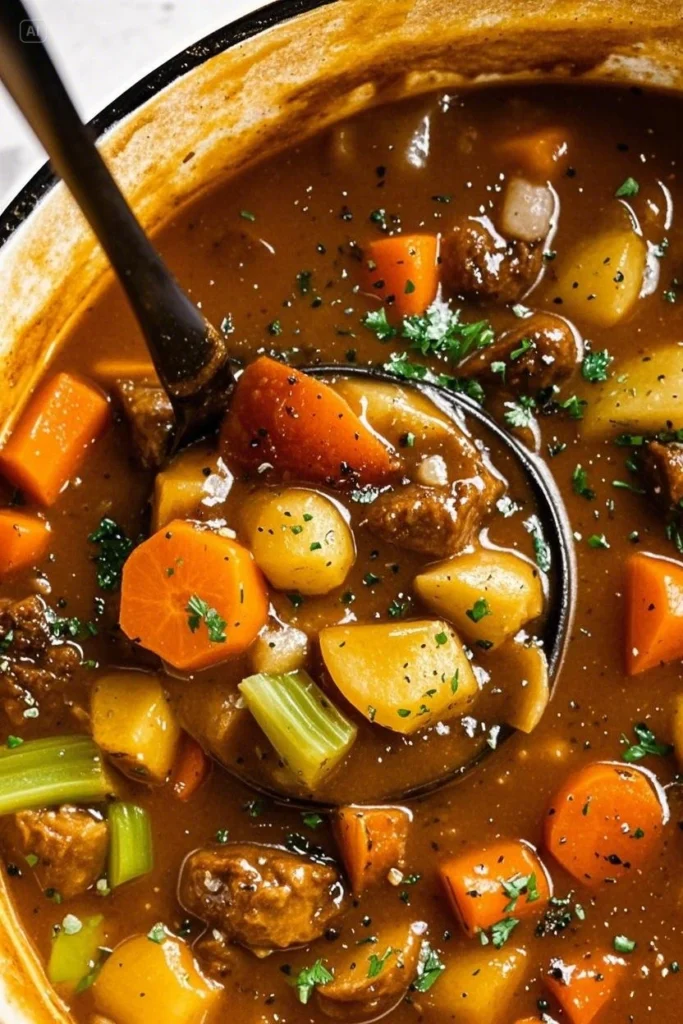
The Rich History of Beef Stew
Beef stew traces its humble origins to peasant cooking, where resourceful home cooks transformed tough, inexpensive cuts of meat into nourishing, flavorful meals through slow cooking. Nearly every culture boasts its own variation—from French Boeuf Bourguignon to Hungarian Goulash—but the American version typically features beef, root vegetables, and herbs in a rich broth.
What began as necessity evolved into beloved tradition. The one-pot nature of beef stew made it practical for busy farming families and later for urban households seeking efficiency alongside comfort. Despite our modern fascination with quick-cooking methods, traditional beef stew reminds us that sometimes patience yields the most satisfying results.
What Makes a Truly Great Old Fashioned Beef Stew?
Exceptional beef stew balances several key elements. First, quality ingredients matter tremendously—even in this humble dish. Second, proper technique transforms those simple ingredients into something greater than their sum. The magic happens during slow cooking, when collagen in tough meat breaks down into gelatin, creating that distinctive silky mouthfeel.
A truly memorable stew offers textural contrast—tender meat that still holds its shape, vegetables with slight resistance rather than mushiness, and broth that clings lightly to each component. The flavor profile should balance savory depth with subtle sweetness from caramelized vegetables and just enough acidity to brighten each spoonful.
Essential Ingredients for Classic Beef Stew
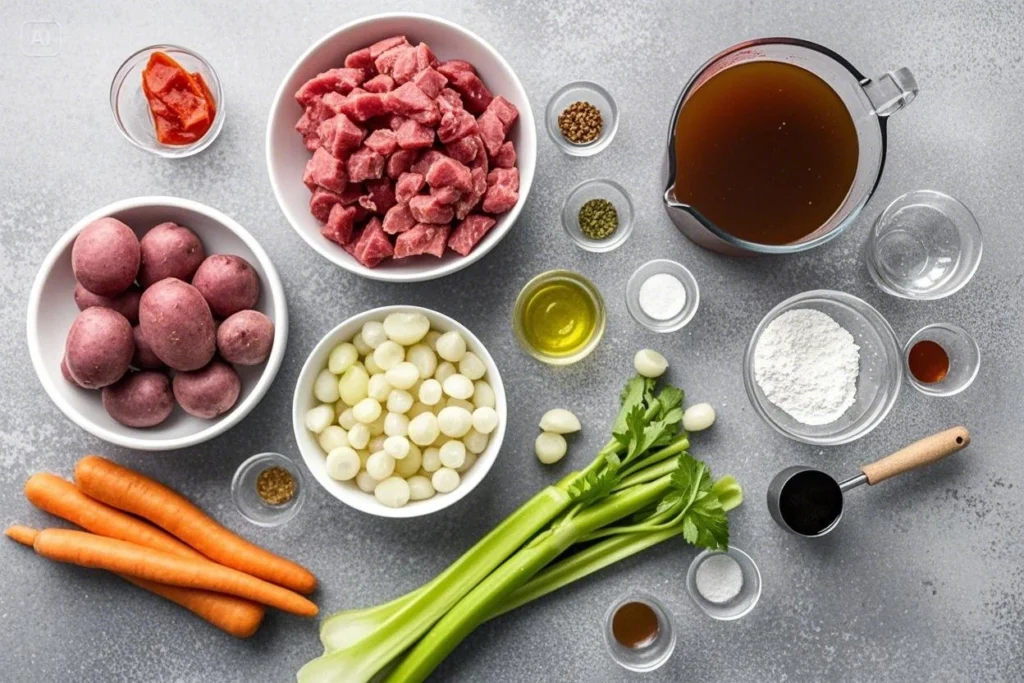
Choosing the Right Beef Cuts
The foundation of outstanding beef stew begins with selecting appropriate meat. Counter-intuitively, premium steaks make terrible stew meat. Instead, look for cuts with significant connective tissue that transforms during slow cooking:
Chuck roast stands as the gold standard, offering ideal marbling and connective tissue that break down beautifully during long cooking. Bottom round works nicely for leaner preferences, while brisket contributes exceptional richness. Regardless of choice, seek meat with visible marbling for best results.
The Foundation Vegetables
Traditional beef stew relies on mirepoix—the aromatic combination of onions, carrots, and celery—to build flavor foundations. Potatoes not only contribute hearty substance but also release starch that naturally thickens the broth. Modern interpretations might incorporate mushrooms for umami depth or parsnips for subtle sweetness, but classics never fail.
Herbs, Spices, and Aromatics
A simple herb bundle of bay leaves, thyme, and rosemary infuses the broth with aromatic complexity without overwhelming. Garlic provides essential depth, while a touch of tomato paste introduces umami richness. Unlike heavily spiced dishes, traditional beef stew employs restrained seasoning that enhances rather than masks the primary ingredients.
Complete Ingredient List for Old Fashioned Beef Stew
| Ingredient | Quantity | Notes |
|---|---|---|
| Beef chuck | 2 pounds | Cut into 1.5-inch cubes |
| Yellow onions | 2 medium | Diced |
| Carrots | 4 large | Cut into chunks |
| Celery | 3 stalks | Sliced |
| Russet potatoes | 3 medium | Peeled and quartered |
| Garlic | 4 cloves | Minced |
| Tomato paste | 2 tablespoons | Adds richness and umami |
| All-purpose flour | 3 tablespoons | For thickening |
| Beef broth | 4 cups | Low sodium preferred |
| Red wine | 1 cup | Optional but recommended |
| Bay leaves | 2 | Whole |
| Fresh thyme | 4 sprigs | Or 1 teaspoon dried |
| Rosemary | 1 sprig | Or 1/2 teaspoon dried |
| Worcestershire sauce | 1 tablespoon | For depth of flavor |
| Salt and pepper | To taste | Be generous |
| Frozen peas | 1 cup | Added at the end |
| Vegetable oil | 2 tablespoons | For browning meat |
Step-by-Step Cooking Method
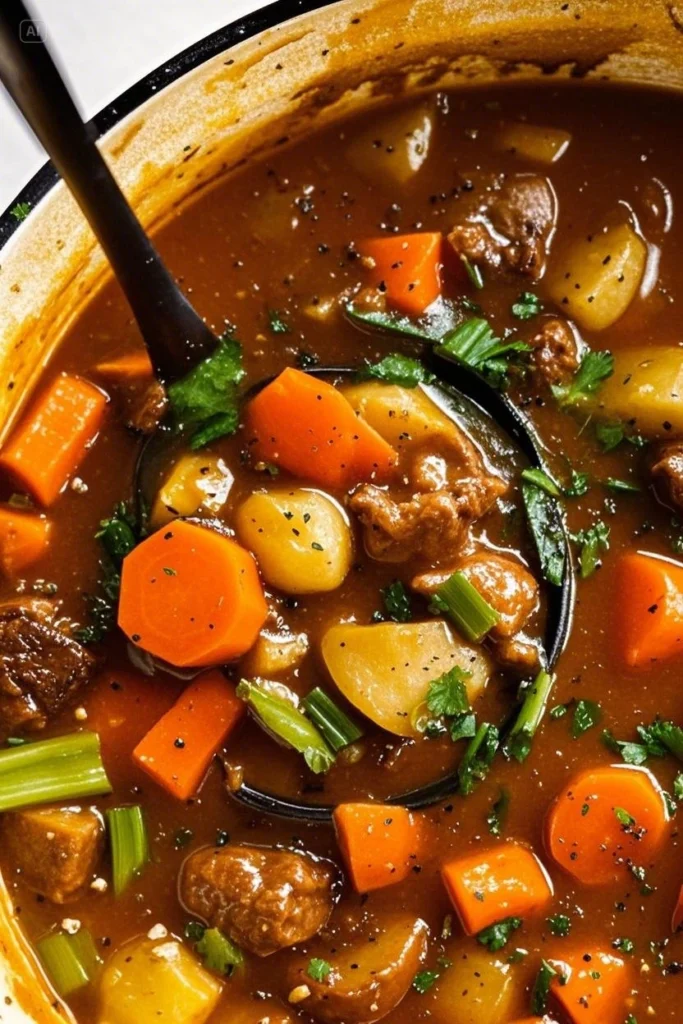
Preparation Techniques
Begin by cutting beef against the grain into uniform chunks—this ensures consistent cooking and tender results. Pat the meat thoroughly dry with paper towels before seasoning generously with salt and pepper. Prepare vegetables while heating your cooking vessel, keeping pieces relatively large to prevent disintegration during long cooking.
The Cooking Process
Browning the Meat
Heat your Dutch oven until nearly smoking before adding oil. Work in batches to avoid overcrowding, which causes steaming rather than browning. Allow each piece to develop deep coloration before turning—patience here translates directly to flavor development. Between batches, deglaze any darkened bits with small splashes of broth or wine, preserving these flavor compounds.
Building the Base
Once meat browns properly, sauté onions in the remaining fat until translucent. Add garlic just briefly before introducing carrots and celery, cooking until edges soften slightly. Stir in tomato paste and cook until it darkens slightly—this removes raw flavor while concentrating sweetness. Sprinkle flour over vegetables, stirring constantly to prevent lumps or scorching.
The Slow Simmer
Return beef to the pot along with any accumulated juices—these contain concentrated flavor. Add wine if using, allowing it to reduce slightly before adding broth, Worcestershire sauce, and herbs. Bring everything just to boiling point, then immediately reduce heat to maintain bare simmer. Cover and cook until meat begins to tenderize (about 1.5 hours) before adding potatoes for their final cooking period.
Small occasional bubbles breaking the surface indicate perfect temperature—vigorous boiling toughens meat and cloudy broth results. Add potatoes during the final hour of cooking, then introduce frozen peas just five minutes before serving for vibrant color and texture contrast.
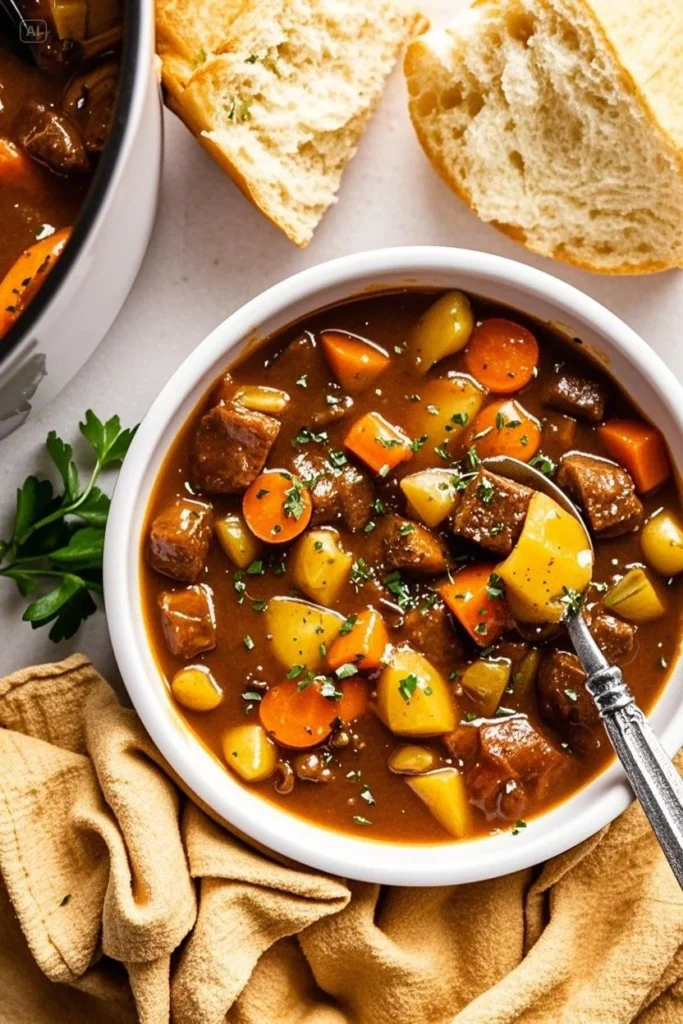
Troubleshooting Tips for Old Fashioned Beef Stew
If meat remains tough after extended cooking, your temperature likely ran too high—lower heat and extend cooking time. For thin stew, create a slurry with 1 tablespoon cornstarch dissolved in cold water, then stir into simmering stew. Conversely, if stew becomes too thick, thin carefully with additional broth.
Taste frequently during final cooking stages. Flat flavor indicates need for additional salt or perhaps a splash of vinegar or Worcestershire sauce to brighten flavors. Remember that seasoning intensifies as liquid reduces, so adjust gradually.
Making It Your Own: Variations on Classic Beef Stew
While traditional recipes deserve respect, consider gentle adaptations. New England variations incorporate parsnips and turnips, while Southern interpretations might include okra for thickening. For those avoiding gluten, cornstarch slurry replaces flour perfectly. Consider mushrooms for additional umami depth or substitute butternut squash for starchy potatoes in lower-carb versions.
International inspirations offer exciting directions—add paprika and caraway for Hungarian influence or tomatoes and olives for Mediterranean flair. However, proceed thoughtfully with adaptations to maintain the comforting essence that defines classic beef stew.
Storage, Freezing, and Reheating Your Beef Stew
Perhaps the greatest virtue of beef stew lies in its improvement with time. Flavors marry beautifully overnight as the stew rests in your refrigerator. Cool completely before transferring to airtight containers, where it keeps safely for three days refrigerated.
Freeze portions in containers with slight headspace for expansion, where they maintain quality for three months. Thaw overnight in refrigeration before gentle reheating over medium-low heat with occasional stirring. Add fresh herbs just before serving to brighten long-stored portions.
The Comfort of Timeless Cooking
Old fashioned beef stew reminds us that some traditions deserve preservation amidst our fast-paced world. This humble dish transforms basic ingredients into profound comfort through patience and care. As you ladle steaming portions into bowls at your family table, you’re not merely serving dinner—you’re continuing a tradition that spans generations and creating memories that will last lifetimes.
Why not pick up the ingredients today and fill your home with the incomparable aroma of simmering beef stew this weekend? Your future self will thank you as you savor each comforting spoonful of this timeless classic.
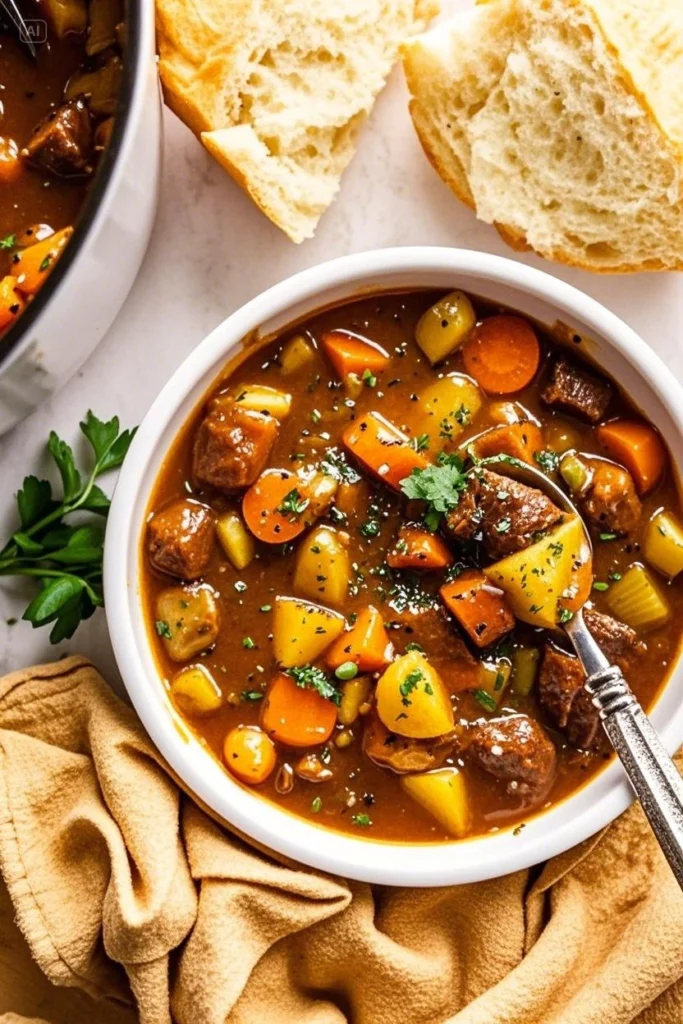
FAQ About Old Fashioned Beef Stew
What cut of beef is best for old fashioned beef stew?
Chuck roast remains the preferred choice for old fashioned beef stew thanks to its perfect balance of meat, connective tissue, and fat. This cut transforms during slow cooking, resulting in tender, flavor-packed bites that maintain their structure rather than disintegrating. Look for pieces with good marbling throughout for optimal results.
Can I make old fashioned beef stew in a slow cooker?
Absolutely! Your slow cooker works brilliantly for old fashioned beef stew, though you’ll want to brown the meat and vegetables separately beforehand. Transfer everything to your slow cooker, then cook on low for 7-8 hours until the meat practically melts when pressed with a fork. This approach delivers that classic, tender beef stew texture while freeing your oven and stovetop.
Why isn’t my old fashioned beef stew thickening properly?
When your old fashioned beef stew refuses to thicken, try creating a smooth slurry using 1-2 tablespoons cornstarch thoroughly mixed with cold water. Stir this mixture into your gently simmering stew, then continue cooking for 10-15 minutes. Alternatively, smash a portion of the cooked potatoes against the pot’s side and stir them into the broth for natural thickening without additional ingredients.
What’s the secret to really flavorful old fashioned beef stew?
Deeply flavorful old fashioned beef stew demands proper meat browning—this caramelization creates complex flavor compounds impossible to achieve otherwise. Additionally, use high-quality beef broth as your liquid foundation, add a splash of good red wine for depth, and allow sufficient simmering time. Patience proves your greatest ally, as extended cooking allows flavors to develop fully and meld together harmoniously.
Can old fashioned beef stew be frozen?
Old fashioned beef stew freezes remarkably well for up to three months. Cool your stew completely before transferring to freezer-safe containers, leaving roughly an inch of headspace to accommodate expansion. For best results, thaw frozen stew gradually in your refrigerator overnight rather than using rapid thawing methods that might compromise texture.
How do I know when my old fashioned beef stew is perfectly cooked?
Your old fashioned beef stew reaches perfection when beef pieces yield easily when pressed with a fork but still maintain their shape rather than shredding. Vegetables should offer slight resistance when pierced—never mushy. The broth should coat the back of a spoon with silky consistency, and flavors should taste harmonious rather than disjointed. These indicators typically appear after about 2½-3 hours of gentle simmering.
The Comfort of Timeless Cooking
Old fashioned beef stew reminds us that some traditions deserve preservation amidst our fast-paced world. This humble dish transforms basic ingredients into profound comfort through patience and care. As you ladle steaming portions into bowls at your family table, you’re not merely serving dinner—you’re continuing a tradition that spans generations and creating memories that will last lifetimes.
Why not pick up the ingredients today and fill your home with the incomparable aroma of simmering beef stew this weekend? Your future self will thank you as you savor each comforting spoonful of this timeless classic.

